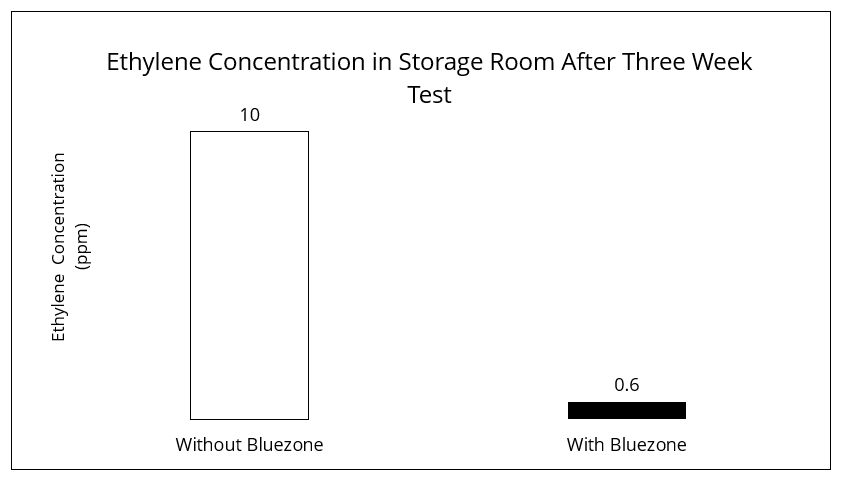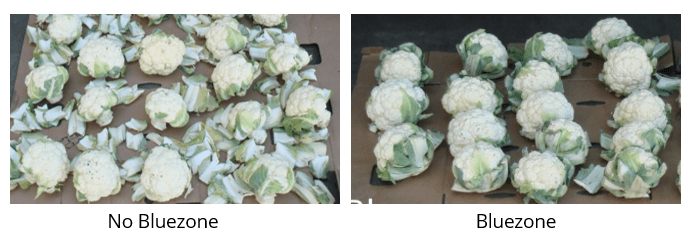Cauliflower Study
Full-Scale, Mixed Load Container Testing with Air Cleaned by Bluezone® Model 2400
Summary
In a 21 day test, Bluezone significantly reduced surface mold and loss of jacket leaves in cauliflower.
Objective
To determine the effectiveness of Bluezone in reducing cauliflower losses in a mixed FF&V container.
Methods and Materials
We conducted a side-by-side test of a mixed produce load over a 3-week storage period, to measure produce quality and the shelf life extension achieved with Bluezone Fresh Preservation Technology.
Configuration
- Two, 8’X8’X20’ Refrigerated Containers, each set to 34°F with ventilation sufficient to maintain CO2 below 1%.
- Mixed produce load of ethylene sensitive and ethylene producing FF&V.
- Temperature, humidity, carbon dioxide and ethylene measurements taken at regular intervals.
- One container with Bluezone, second container without Bluezone.
Duration
- 21 Days of Refrigerated Storage
- 5-10 Additional days of ambient temp storage for specified FF&V
Results
The Bluezone Model 2400 maintained ethylene concentration in the mixed load container at 0.6ppm throughout the 21-day test. Uncontrolled ethylene concentration was 10ppm.
This dramatic reduction in ethylene concentration had a significant impact on the quality of ethylene sensitive produce, such as cauliflower.

Test Results for Cauliflower
Photos indicate Bluezone significantly reduced instances of surface mold and jacket leaf losses in cauliflower after the three week test period.

Conclusion
Storing the cauliflower in a mixed load with Bluezone Fresh Preservation Technology mitigated both surface mold and the jacket leaf losses. Surface mold, presenting as small black spots on the florets, is present on almost all cauliflower in the container without a Bluezone. This cauliflower also experienced a catastrophic loss of jacket leaves which are supposed to remain around the cauliflower until consumption.
